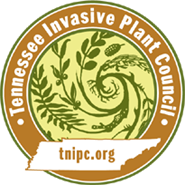Daucus carota L.
Queen Anne's Lace, Wild Carrot| Category |
|---|
| Forb/Herb |

Description
Height
Queen Anne’s Lace can get as high as 3 feet (1 m).Stem
The stem is coarsely hairy and branches from a single base.Leaves
The leaves of Queen Anne’s lace are alternate, finely hairy and compound, divided into linear or lanceolate segments. Lowest leaves are long and petiolate. Upper leaves are short petiolate to subsessile.Flowers
Large, round clusters of small bright white flowers measure 1-3 inches (3-7.5 cm) across and resemble lace. Often in the middle of the white flowers there is a small red or purple flower. A whorl of bracts subtend the flower head. The flowers appear from May through October.Fruit
The seeds mature and are released from midsummer to midwinter. The seedhead contracts, folding in on itself to resemble a bird's nest. Dried umbels detach from the stem and tumble along the ground. The seeds have barbs, which promote dispersal by animals and wind.Images
Photo: Chris Evans, River to River CWMA, Bugwood.orgMore images of Daucus carota
Life History
Life HistoryQueen Anne’s Lace, also called Wild Carrot, is a biennial, flowering from June to August. It flowers in its first year having produced a large, single taproot. The roots are similar to carrots and can be eaten when young. Similar to the poisonous Water Hemlock (Cicuta maculata), Queen Anne’s Lace is distinguished by more delicately textured leaves, fine hairs on its stems and leaves, a root that smells like carrots (Water Hemlock smells like parsnips), and occasionally a single dark red to purple flower in its center.
Habitat
This plant is common to roadsides, railroads, waste ground, and open fields. It can live in dry areas and areas of medium water supply.Origin and Distribution
Queen Anne’s Lace is a member of the Apiaceae (Carrot) family and has naturalized in every state in the US except Hawaii. It is native to Europe and SW Asia. Federal or State Listed as Noxious Weed, Prohibited, Invasive or Banned: IA, MI, OH, WASources
Assorted authors. State noxious weed lists for 46 states. State agriculture or natural resource departments.Haragan, P.D. 1991. Weeds of Kentucky and Adjacent States: A Field Guide. The University Press of Kentucky. Lexington, Kentucky.
Southeast Exotic Pest Plant Council. 1996. Invasive exotic pest plants in Tennessee (October 1999). Research Committee of the Tennessee Exotic Pest Plant Council.
